Transforming the First Draft
This week, we discuss how to edit the first draft of your novel. Should you let your manuscript rest or start editing immediately? Then, we share our editing checklists and some tips about dealing with beta reader feedback.
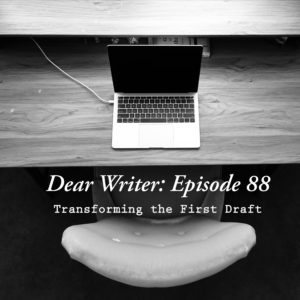
Episode Summary:
Main Discussion: Transforming the First Draft
This is a really appropriate topic given both Sarah and I have been editing our teen fiction novels recently. Finishing the first draft of a novel is a massive milestone (no matter how good or bad that draft has turned out). What are our initial feelings once the first draft is complete?
Sarah: I am usually really excited about having finished the draft and having written those final words. For me, although I enjoy the writing it doesn’t always come easy. The editing feels more natural to me, as a technical process where we go, ok, what parts aren’t making sense? Which bits need polishing? Finishing the draft means I’m one step closer to the finish line, and (though it usually still requires a lot of work) with that comes the anticipation of getting the book out into the world.
Ashley: For me, once the draft is finally complete, it is a mixture of accomplishment and relief. I feel the most excited in the last couple chapters where I really start to feel like the whole thing is coming together and get that surge of energy to finish. Once the book is complete, it’s more a sense of relief that the thing you’ve been working on for so long is finally done, and you can take a break. The hardest part is over.
Sometimes you get a big surge of energy after finishing the first draft, and you can’t wait to keep working on it. But many authors think there is an important first step once a first draft is complete. Let it rest. How do we feel about letting a first draft rest, and what are the potential benefits/drawbacks?
Sarah: I’m not a person who is good at letting things rest, and I don’t wholly subscribe to the notion of letting a book rest immediately after the first draft. I think it depends on your personal stamina as to when that period of ‘rest’ becomes most effective. For example, for me, I work best when I focus on one project at a time. So, sometimes it’s better for me to stay ‘in the zone’ with a project rather than put it down. I might get through the first draft and want to immediately start editing, and I can still be very productive. But, there does come a point, say after two rounds of editing where I can no longer make head nor tail of what’s wrong with a piece, or where I just start skim reading even when I know I should be going through it in more detail. That’s the point for me where ‘resting’ the book becomes necessary.
Ashley: I actually talked about this in my most recent blog post. I think it is crucial to put your manuscript aside for a while for three reasons. First, it’s easy to miss plot holes and bigger mistakes when the story is fresh in your mind – the events are so fresh in your mind it’s harder to be objective. Two, a lot of the passages you have semi-memorised or remember quite well which makes it easy to unknowingly skip over parts and not be as critical as you could be. Finally, as writers are always developing their craft, the benefit of a couple months means that you have likely grown a bit as a writer (even if you don’t realise it) and you will be better at spotting the weaker passages and parts that need tweaking. Some of the benefits include that you are more objective and can find mistakes/spot plot holes/be more critical.
Talk through the steps we each take when tackling a first draft for the first set of edits.
Sarah: I have a similar method, except mine is more digital as I don’t have anywhere I can print such a large document for cheap (we’d run straight through our printer ink!). I format the draft in Scrivener which helps save time down the road. Then I make a mock-up ebook which I share to both my computer and my phone. On the ebook, I can then read through it and highlight parts and take notes. I also find that having it formatted this way, in a professional layout, makes it more obvious which bits seem to be lacking and letting the rest of the book down. Once I’ve taken all my notes, I start to edit. I begin with the really glaring plot holes (which saves wasting time doing minor edits and then having to delete something you’ve already edited). Then I move onto smaller things like filling out a scene with details, or perfecting a tricky patch of dialogue until it’s just right. I used to focus on one element at a time (description, character, dialogue etc), but now I tend to take a chapter by chapter approach. Once I finish with the first round of edits I read it over again, again taking more notes. This process continues with me getting pickier and pickier about word choice, and the changes becoming smaller with every pass over the manuscript until I finally feel there’s nothing (or very little) that I would want changed.
Ashley: I like to print out the first draft, and read it through from start to finish. I am always armed with a highlighter and post its. I make notes on the massive issues I spot and tag them with post it notes. I also highlight any really obvious spelling mistakes as I go along. In that first read through I’m generally looking for passages that are weak/cheesy/unclear and large plot holes. I’m also on the look out for character inconsistencies/motives that aren’t strong enough/don’t fit the character. Once I’ve done my first read through I then start to work on the actual edits. I usually start with the major issues I have identified – the massive passages (sometimes whole chapters) that need re-writing, and I run any huge changes (mostly plot/character issues) past Sarah.
In the many subsequent edits that follow, what are some key aspects we tend to focus on?
Sarah: My process as described above! I go over and do another ‘round’ of edits until I think it’s no longer necessary. Additionally though, on subsequent rounds I’m also reading the edits I made and making sure 1) they flow with the rest of the text, and 2) there have been no inconsistencies created by changing an earlier element. And like Ashley, I’m always looking for passages that feel ‘off’. Sometimes I unwittingly gloss over something I know needs changing in the first round. I’m not sure if this is because it seems too hard, or whether I’m just feeling lazy, but I often find it’s not until later edits where I knuckle down and say, OK Sarah, this passage has bugged you since day one. DO SOMETHING WITH IT.
Ashley: I’m always thinking about character motives and if all the actions the characters do make sense for them. Would Levi do that in that particular situation? Would Lizzie say that? I also assess the character actions and plot for how realistic it all feels. Eg, in that situation would it really make sense for x and y to happen. If not, do we need more set up/do we need to tweak the cascade of events so this all makes sense or do we need to change things all together? The other thing I’m always watching out for are passages that feel “off”. It’s hard to describe exactly what makes a paragraph feel “off” but it’s usually fairly obvious when you find them. Realistic dialogue is another one.
Do we have a personal self-editing checklist (ie, a list of things that we comb a manuscript for)?
Sarah: Not for structural edits, but yes for proofing. I delete a lot of superfluous words, especially adverbs. And because we like to Americanize our spelling, I’m always keeping an eye out for the odd British word that’s snuck it’s way in, though I do allow a little local slang depending on the book’s setting. I do word searches for the British words and replace them with their American counterparts so it’s all consistent. Sometimes, if there’s a recurring typo (looking at you, solider), I will word search the typo to make sure all instances have been fixed. Also I’m an oxford comma fan. I add in oxford commas, especially when there’s a group of names like, “Grace, Levi and Dylan.” I don’t want it to seem like Levi and Dylan have their own little thing going on so an oxford comma (Grace, Levi, and Dylan) helps to clarify that. Usually I make a list of our common mistakes and then go through it one by one. It’s my last and final thing before sending the book to Ashley, or to be professionally edited.
Ashley: Yes. Once most of the hard rewriting is done I always comb the manuscript for words that can be contracted (especially in dialogue) that we have missed. There are always a whole bunch of “I cannot believe it” and “I do not want to go” etc. I then look for words to be deleted (use the find function in word) “that” – there are always a few hundred. Also the words just, well, sighed, and then the actions cried/cry, tears, over description of eyes, and hands running through hair too often. Then I start to look for all the ‘hedging’ words as I call them – sort of, half, little bit, partly etc.
What stage do we think is the best stage to send the manuscript to beta readers or to get feedback on the work?
Sarah: It depends. If you have someone who’s happy to read it several times over, there’s no harm in sending your unpolished draft as you’ll get a ton of feedback on things you need to change. But if you don’t have a person to do this, then getting the draft polished until it’s at a point where you think you’ve fixed all the major parts before giving it to beta readers is good. Like, if the spelling and grammar still isn’t the best it’s fine, but you want them to have an accurate representation of what the book’s going to be like. Otherwise, they’ll just pick up on things you already know needs to be fixed, which isn’t helpful. It’s better if you think you’ve got it to a really polished product and then let them tear down that fantasy! It’s painful, but it really helps to show you those pieces that aren’t as strong as what you initially thought.
Ashley: For beta readers, I think it is best to send it away once you are fairly happy with the story. It sounds quite vague but I think it will be different for each story. It’s at the point where you think hey, this is as good as I can get it for now. I can’t see any obvious plot issues, my characters seem coherent, I’ve spell-checked this to death. There’s not much more I can do with this without driving myself mad. For general feedback, I honestly think that the earlier you can get feedback, the better. Having gone through this process as we wrote the first draft with our novel writing group, the constant and early feedback has been really helpful. Especially for correcting issues with your writing as they arise. Picking up on your bad writing habits early, before they are spread through an entire manuscript. They also tended to ask a lot of questions relating to how they saw the plot developing/things we may have over looked.
What do we do with beta reader feedback? What do we take on board and what do we ignore?
Sarah: I always listen to the feedback, because their advice is valuable and sometimes even if I don’t want to change something they might highlight a part that needs more clarity. But where I ignore the feedback is when they’re having the reaction to the piece that I wanted. Like, if I wanted them to dislike a character and they really don’t like that character, brilliant! I’ve done my job. Where you have to be careful is remembering the beta readers might not have all the information, especially if it’s a series, so they can’t always see where the plot’s headed. If you’re setting things up for farther down the road, you might not want to change a specific thing based on their recommendations. Other times, they can completely hit the nail on the head. In our most recent teen fiction book, Darkness, Set Us Free, our beta reader commented they’d like to see more action in a specific setting. We looked into it and decided that yes, we had rushed that part and it could be drawn out for better effect. We ended up adding a new character who I think will round out the book and take the next book in the series to a new height.
Ashley: I take almost all the feedback on board to some extent, or at least consider what they have said. Sometimes, the bigger suggestions they make have larger consequences for future story arcs so we might not take on their recommendation. Even if this is so, Sarah and I will often discuss whether the issue raised is important enough to actually change something about it anyway – usually if the Beta reader has called something out, it is for a reason. And sometimes it can be quite fun thinking of the creative ways to remedy different situations the beta readers have identified.
How important is it to have a professional editor look over your manuscript?
Sarah: I think it’s really important to at least have some copyediting and proofing done, even if you don’t go the full way and have structural editing suggestions made. We’re lucky that Ashley’s sister is a professional editor, but if not, we’d still be paying money for it to be done. Yes, it’s a pain and it costs. And I understand some people might not be able to afford it. But the bottom line is, if you want your book to be a professional product, it’s got to be professionally edited. There are going to be issues that you can’t see—no matter how good at editing you think you are or whether you have technology like Grammarly.
Ashley: I think it’s vital. We thought our manuscript for When the Rain Falls was polished but once we sent it to our editor she picked up another 500 or so issues. Not all of them were mistakes, but a lot of them were bad habits we had picked up, crutch words we hadn’t noticed, passages that were still unclear. If you can’t afford an editor, at a bare minimum have another person (or writer friend) read your manuscript before you publish it. It’s amazing how many mistakes a fresh set of eyes will pick up.









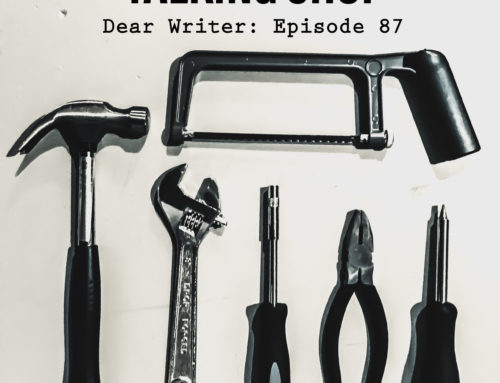



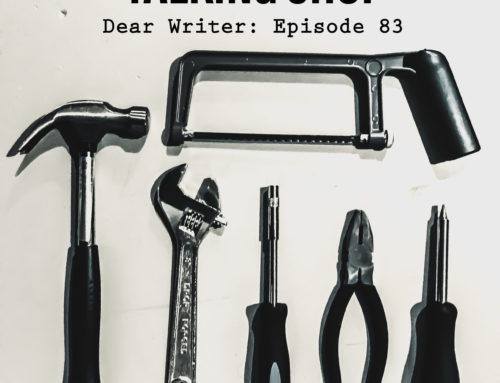


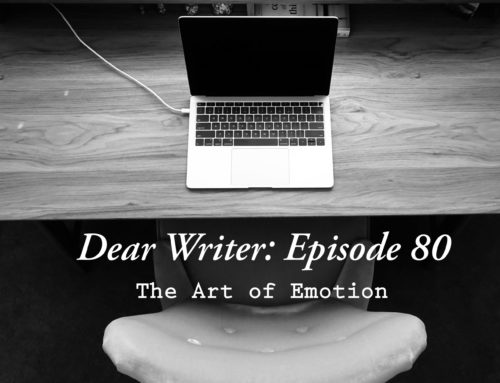
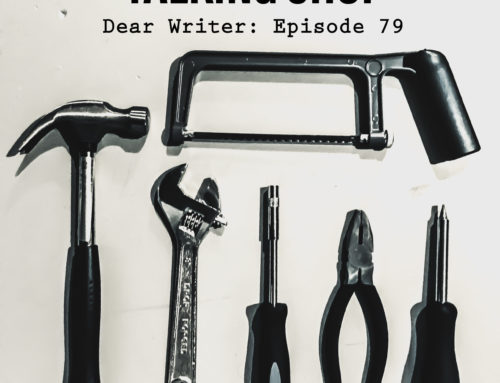
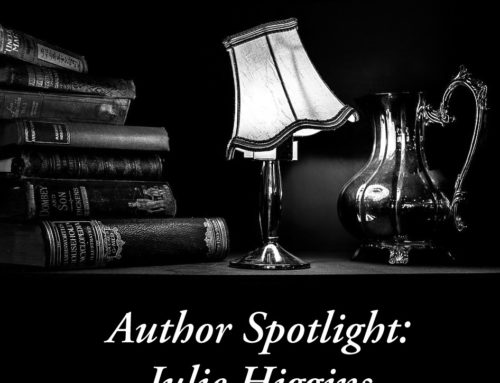

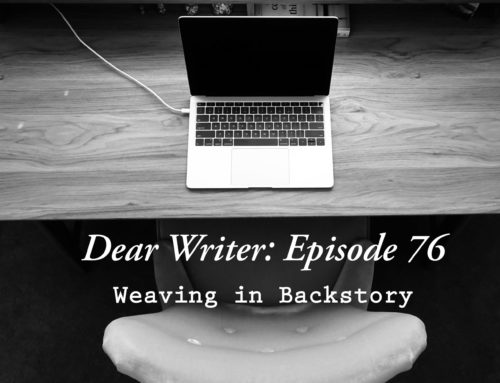
Leave A Comment